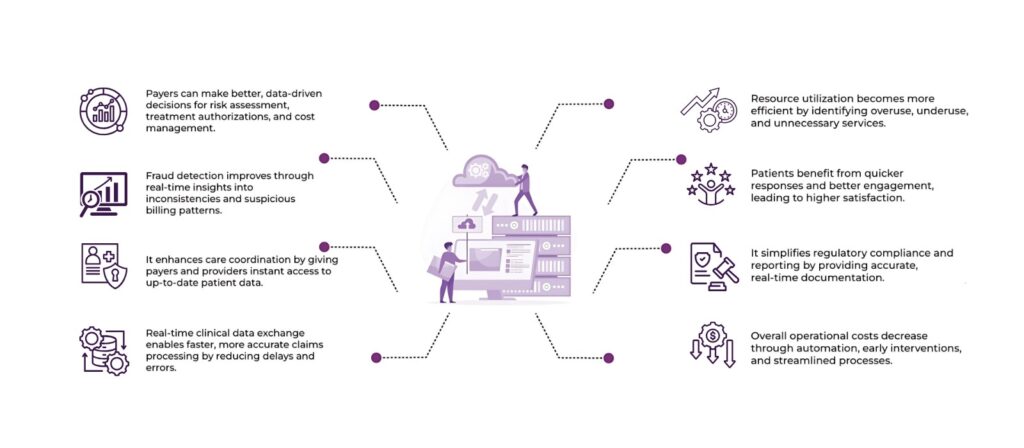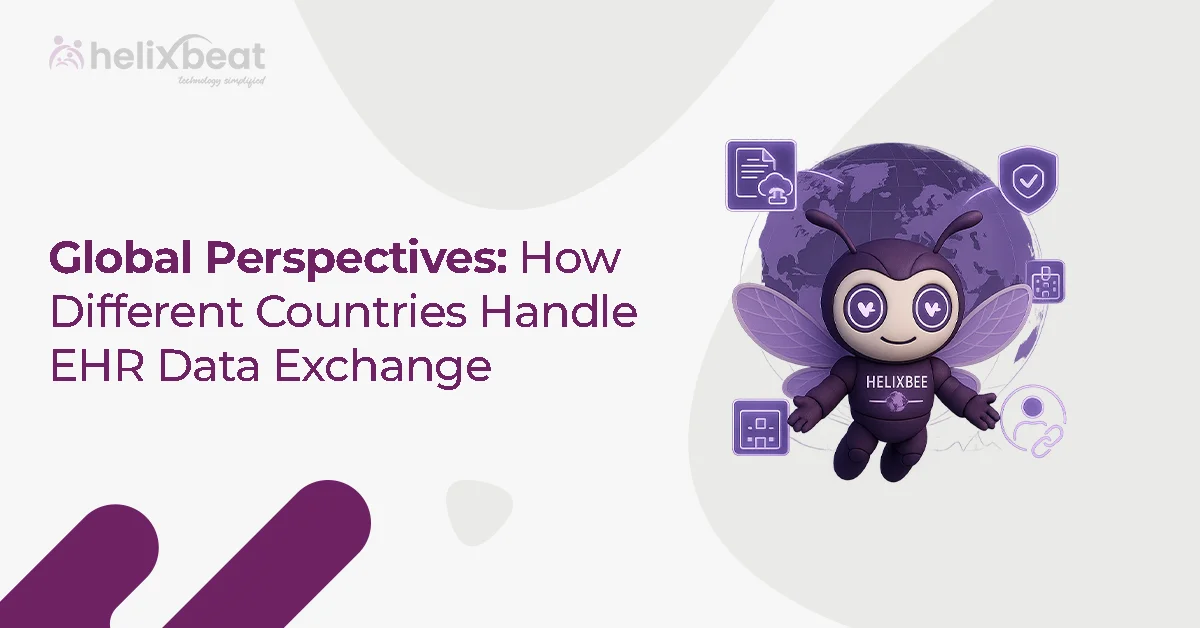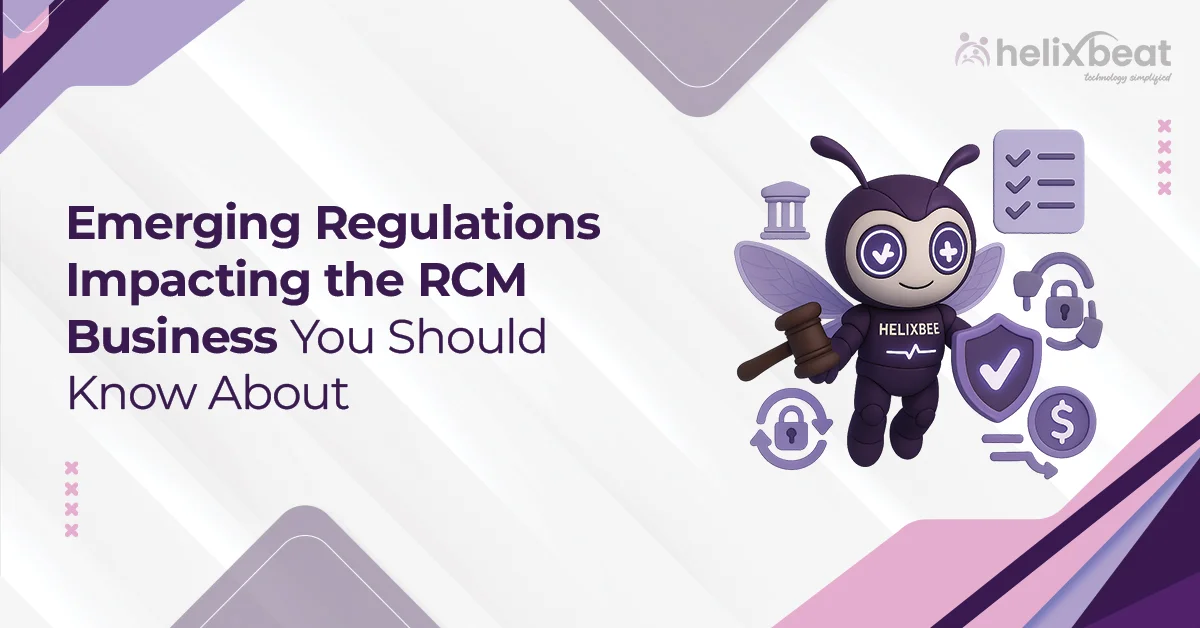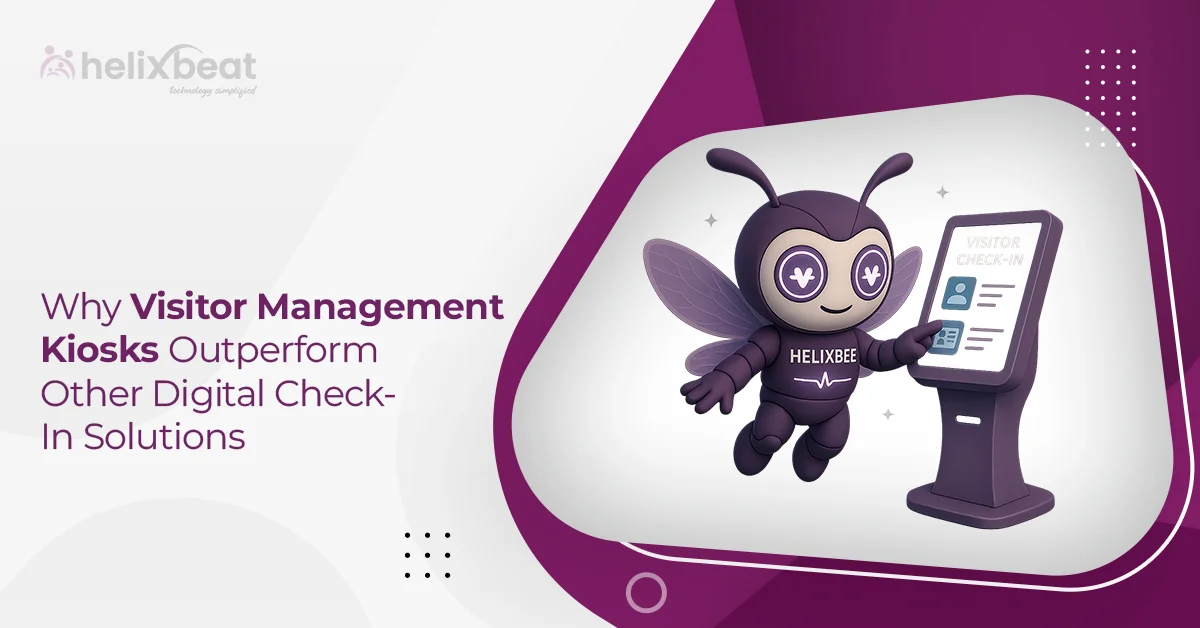Healthcare organisations today are under immense pressure to streamline operations, improve patient outcomes, and reduce costs. But what if there were a way to make this a little easier? The answer lies in real-time clinical data exchange.
In this blog, we’ll discuss what real-time clinical data exchange is, how it benefits everyone involved, and why it’s such a game-changer for payer operations.
Table of Contents
What is Real-Time Clinical Data Exchange?
Real-time clinical data exchange is the instant transfer of clinical information between healthcare providers, payers, and other key players in the healthcare system. It uses secure electronic systems like Health Information Exchanges (HIES), Application Programming Interfaces (APIS), and electronic health records (EHRS) to make communication smoother across the healthcare ecosystem.
Unlike traditional methods, where data is collected and transferred in batches, real-time data exchange provides continuous, up-to-the-minute updates on patient conditions, treatments, and outcomes. This translates to better decisions about patient care, treatment approvals, claims processing, and more.

1. Faster Claims Processing
The claims process can be lengthy and complicated for payers. It involves verifying clinical information, ensuring treatments follow approved guidelines, and determining the right reimbursement. Real-time clinical data exchange can speed up this process.
With real-time data at their fingertips, payer organisations can quickly check the accuracy of claims, spot discrepancies, and make adjustments without delays. This not only reduces administrative work but also makes the claims process more efficient. It also helps payers avoid rejections or denials due to missing or outdated information.
2. Enhanced Care Coordination
Effective care coordination helps patients receive the right care at the right time, and real-time clinical data exchange makes this even better. With access to the latest patient information, payers can easily track a patient’s progress and step in when needed.
For example, if a patient is being treated for a chronic condition, payers can use real-time data to monitor how well they follow the treatment plan and the results. This information can be shared with healthcare providers, helping them decide if any changes are needed. By improving communication and teamwork between providers, payers can help achieve better health outcomes while reducing overall healthcare costs.
3. Increased Fraud Detection and Prevention
Fraud is an ongoing issue in the healthcare industry. Activities, such as false claims or misrepresentations of services provided, are often discovered only after claims have been processed, costing billions of dollars each year.
With real-time clinical data exchange, payers can detect potential fraud as it happens. By accessing and analysing clinical data in real-time, payers can identify inconsistencies or patterns that suggest fraudulent activities. This includes detecting discrepancies in billing codes, mismatches between services rendered and treatments documented, or overutilization of services.
Early detection translates to immediate corrective actions, ultimately reducing the overall impact of fraud on payer organisations.
4. Improved Decision-Making and Risk Management
Payers need access to comprehensive, accurate data to make decisions about coverage, risk assessment, and cost management. Real-time clinical data exchange can significantly enhance this decision-making process.
With access to real-time clinical data, payers can make more accurate risk assessments by evaluating a patient’s current health status, treatment history, and progress. This is especially important for payers who manage populations with chronic conditions or high-risk patients. It helps them quickly identify high-risk individuals and intervene early.
Moreover, real-time data helps payers evaluate the effectiveness of treatments and identify which interventions provide the best value. Using up-to-date clinical information, payers can make more data-driven decisions regarding treatment authorisations, payment models, and care plans.
5. Optimised Utilisation of Resources
Another critical challenge for payers is managing healthcare resources. Inefficient use of resources, such as hospital stays, diagnostic tests, and speciality consultations, can drive up healthcare costs and reduce overall efficiency.
With real-time clinical data exchange, payers can track the utilisation of healthcare resources in real time. This helps them identify unnecessary services, overutilization, or underutilization of certain treatments. As a result, payers can implement strategies to optimise resource allocation, such as directing patients to more cost-effective care options or avoiding redundant tests and procedures.
6. Enhanced Patient Engagement and Satisfaction
Real-time clinical data exchange benefits payers and providers and improves patients’ experiences. By providing patients with more accurate, timely information about their care, payers can enhance patient engagement and satisfaction.
For example, when patients know that their insurance claims are being processed efficiently and that their care team is receiving up-to-date clinical information, they feel more confident in the healthcare system. As information is exchanged in real time, healthcare providers can act more quickly to address patient needs, which reduces wait times for appointments, referrals, and treatments.
7. Regulatory Compliance and Reporting
Multiple regulations govern the healthcare industry, dictating how data should be shared, stored, and processed. These regulations often require detailed reporting, which can be time-consuming and prone to errors without the right tools.
Real-time clinical data exchange helps payers stay compliant by securely and accurately transferring clinical data. This smooth data flow makes reporting easier, as payers can quickly access the information needed to meet regulatory requirements.
Moreover, real-time data exchange promotes transparency, which is becoming more important in healthcare. With up-to-date data at their fingertips, payers can provide more accurate reports to regulatory bodies, helping to avoid penalties or fines for non-compliance.
8. Cost Reduction
Payer organisations prioritise cost containment, and real-time clinical data exchange offers huge potential for cost reduction. By enabling more accurate claims processing, better care coordination, and more efficient resource utilisation, payers can drive down administrative and operational costs.
Moreover, the ability to identify high-risk patients and intervene early can prevent costly hospitalisations and emergency interventions. The streamlined processes provided by real-time data exchange also reduce administrative overhead, as payers can automate many aspects of claims adjudication, fraud detection, and reporting.
How AERIS Facilitates Real-Time Clinical Data Exchange
AERIS, a FHIR-based real-time clinical data exchange software, connects different healthcare systems, making it simple and secure to transfer clinical data between providers, payers, and other stakeholders. With AERIS, healthcare professionals can access important information—such as medical histories, lab results, and treatment plans—instantly, improving collaboration and speeding up decision-making.
AERIS also helps healthcare organisations comply with industry regulations by simplifying reporting and data management. Its use of FHIR makes it easier to maintain data security and privacy while allowing smooth data exchange across various platforms.
Final Thoughts
As the healthcare industry evolves, adopting real-time clinical data exchange will only become more vital. Payer organisations that embrace this technology will be better positioned to meet future challenges, ultimately providing higher-quality care to patients while optimising their operations.
Learn more about how AERIS can transform your operations today!
FAQs
1. How does real-time data exchange improve claims processing?
With real-time access to clinical data, payers can verify claims quickly, identify discrepancies, and make adjustments immediately. This streamlines the claims process, reducing administrative delays and the likelihood of denials due to outdated or missing information.
2. What role does real-time clinical data exchange play in care coordination?
Real-time data exchange allows payers to track patient progress, ensuring that healthcare providers have access to the most current information. This helps in making timely decisions and improving care coordination.
3. How does real-time data exchange improve decision-making and risk management?
Real-time data allows payers to assess a patient’s current health status, treatment history, and progress, enabling more accurate risk assessments and timely interventions for high-risk patients. This helps payers make better, data-driven decisions about coverage, care plans, and treatment approvals.
4. How does AERIS facilitate real-time clinical data exchange?
AERIS is a FHIR-based platform that connects different healthcare systems, allowing for secure, real-time clinical data transfer. It helps healthcare organizations improve collaboration, speed up decision-making, and stay compliant with regulations while maintaining data security and privacy.














